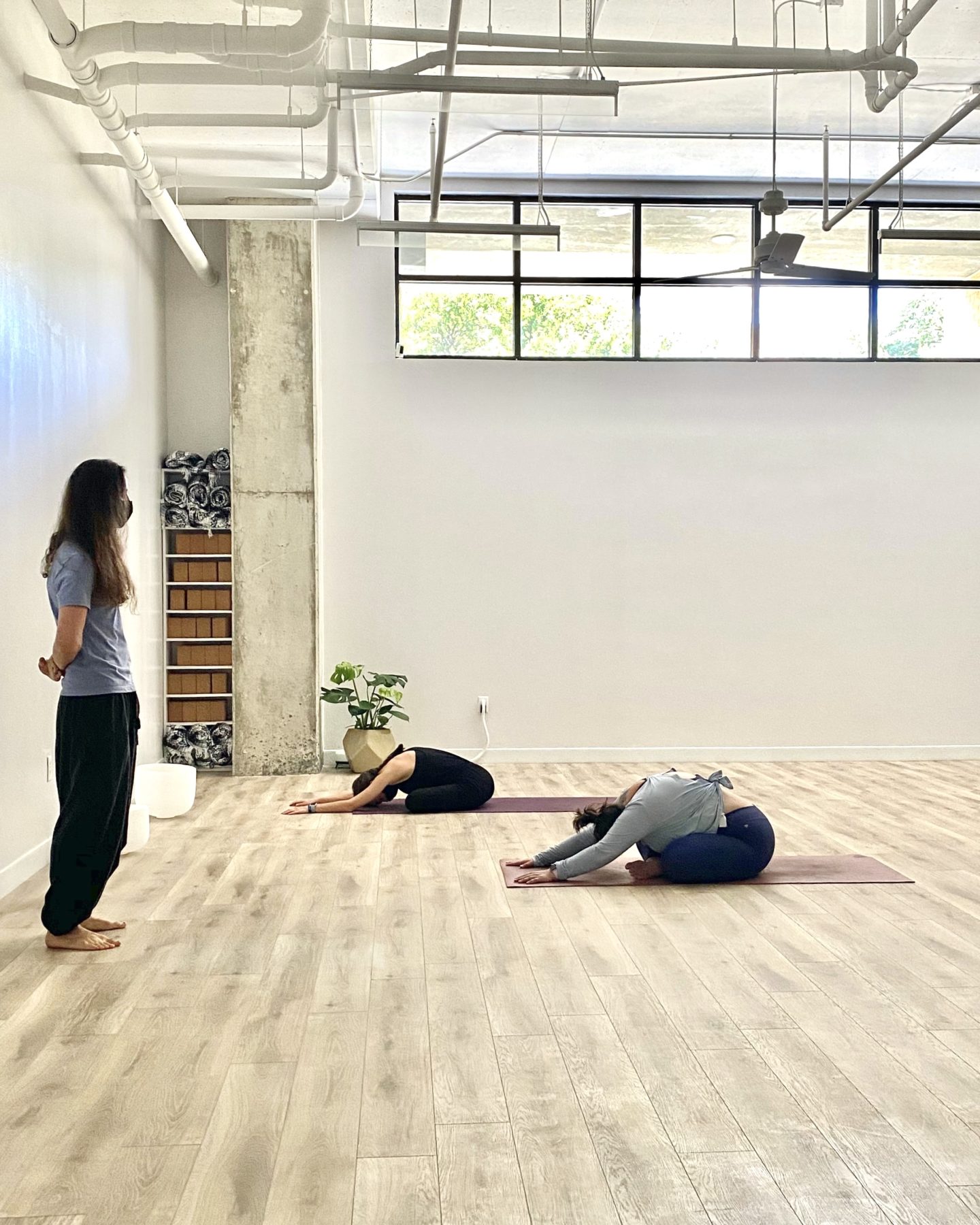Wellness FAQ with My Vinyasa Practice

AFM: What is yoga therapy?
MVP: Yoga therapy is complementary to other therapeutic modalities. It leverages the tools found within yoga and mindfulness to work through the different energetic layers of the body to help people integrate them, and to feel a sense of wholeness and well-being.
AFM: Who should try yoga therapy?
MVP: We think everybody should try yoga therapy! It can help people to find more balance and ease in their lives, while addressing limiting beliefs and judgements that they’re holding in their body on an energetic level. It’s an excellent complement to anyone’s existing wellness routine.
AFM: What is the difference between yoga and yoga therapy?
MVP: Public asana classes focus on toning the sympathetic nervous system and giving individual practitioners tools to regulate their nervous system. Yoga therapy sessions focus on the individual’s experience with the objective of giving them tools and practices to help integrate their experience physically, intellectually, emotionally and spiritually.
AFM: How do I book a yoga therapy appointment?
MVP: Find My Vinyasa Practice on the MindBody app! You can book a yoga therapy appointment via the MindBody app by selecting the service and provider you want to work with. Our yoga therapy is donation-based and can be done in-person or online.
AFM: How does MVP include the use of sound during yoga therapy?
MVP: We use sound healing, meditations and sound baths during or after Yoga Nidra or Restorative Yoga practices. Sound baths and sound healing use the vibrational qualities of various notes to help tone the subtle bodies. The idea behind this is that the subtle body energies, or the chakra bodies, vibrate to a specific frequency. When we are out of balance, sometimes it’s helpful to bring in that frequency from an external source such as a gong or crystal singing bowls so that we can synchronize our subtle bodies.
AFM: What can yoga and meditation do for stress levels?
MVP: Yoga, meditation and mindfulness practices have been proven to lower cortisol levels, which helps the body to remain in homeostasis. The more stress we have in our lives, the more cortisol we have in the body. Cortisol, a hormone which must be processed by the body, can negatively impact and wear down the organs.
AFM: Why is it important to practice yoga consistently?
MVP: A consistent yoga practice will help you to respond rather than react to stressful situations, which will allow you to live with more ease!
AFM: How can yoga help with anxiety and depression?
MVP: Our yoga practice teaches us to be non-judgmental, which helps us to look at our inner material through a compassionate lens. We learn to be more present and connected to our experience, and this helps to prevent past thinking, ruminating thoughts and the fear of the unknown.
AFM: I don’t have a lot of time for yoga. How can I incorporate yoga into my daily routine without dedicating hours to practice?
MVP: Mindful moments, gentle stretching and breathing exercises can be incorporated into your routine with ease. Take five minutes out of the day to stop and be present. Ask yourself what sensations are arising in your awareness. You can practice box breathing for a couple minutes throughout the day and come back to the present moment through breath awareness. You can incorporate simple stretches like cat-cow or supine twist into your waking and sleeping routine. These are just a few ways we can integrate yoga everyday.
AFM: What are some simple breathing exercises I can do at home?
MVP: Box breathing, or ratio breathing, is a form of pranayama that helps to calm the nervous system. Sitting in a comfortable seat, inhale to the count of four or five, pause to the count of four or five, exhale to the count of four or five, and pause to the count of four or five. Repeat this, comfortably adjusting the time each part of the breath is held to suit your body. Practice this technique for three to five minutes, and observe how you feel in your body and mind.
AFM: What is Yoga Nidra?
MVP: Yoga Nidra is the yoga of sleep and can be a very powerful tool for integrating the body and mind. Anyone can practice Yoga Nidra. You can select any number of audio recordings from the internet or an app like Insight Timer. Practicing Yoga Nidra regularly helps practitioners to respond rather than react to stressful situations and to realize their sankalpa over time. A sankalpa is a personal intention that can be set at the beginning of Yoga Nidra practice.
Find out more about donation-based Yoga and Yoga Therapy at My Vinyasa Practice by visiting myvinyasapractice.com, or find us on the MindBody app.






